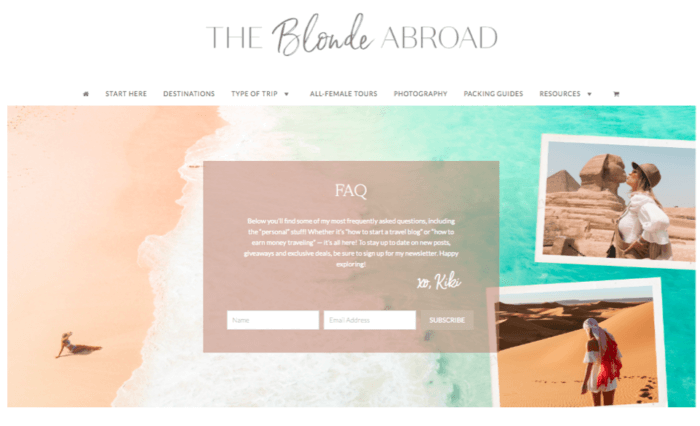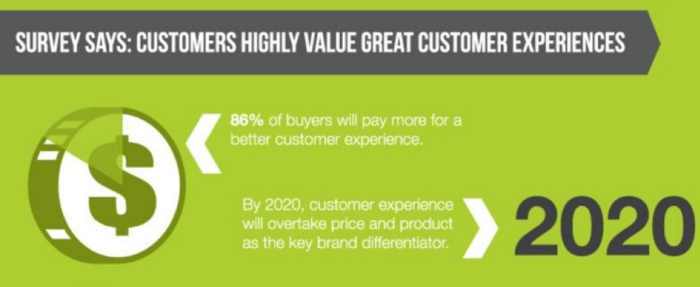Creative, low-cost ideas are the way of the future, and they work just as well (and sometimes better) as some of the most expensive methods of marketing
Despite what you may have heard from expensive marketing companies, it doesn’t take a lot of money to get your customers to engage. As long as you know what you’re doing, you can keep costs low and still facilitate a high level of engagement.
Whether you’re an entrepreneur in a small company, a freelancer, or a member of a big marketing team at a large company, it pays to save money where you can in your advertising techniques. Creative, low-cost ideas are the way of the future, and they work just as well (and sometimes better) as some of the most expensive methods of marketing.
To begin with, here are three awesome and affordable marketing tactics you can use to encourage more customer engagement.
1. Make yourself a trustworthy expert
A key concept to remember is that becoming an authority doesn’t always require money – just time and knowledge. People want to engage with businesses they feel are reputable and knowledgeable, and you can demonstrate these traits without spending an arm and a leg on paid marketing. The more expertise you can show your customers; the more engagement you will encourage.
To jumpstart your authority marketing strategy, here are a handful of cheap ways you can demonstrate your expertise to others:
- Run a well-written and highly researched blog that provides relevant information to followers.
- Build a collection of evergreen content that people in your industry can turn to.
- Stay up-to-date with the newest trends and changes in your field.
- Connect with other authorities in the field through guest posts, interviews, etc.
- Answer questions in public forums and online communities.
- Highlight your trustworthiness and knowledge by interacting with customers on social media.
One of the most important aspects of your marketing success (or failure) is how much your customers trust the brand. A study by Accenture found that trust is as important as both growth and profitability in terms of the company’s financial health. A big loss in trust can lead to a significant reduction in revenue.
While many companies focus on having the coolest advertisements or the latest and greatest marketing techniques, you should focus on creating strong relationships with your customers built on trust. Show them that your team members and brand have authority in your field. As a result, customers will turn to you as a source of information and advice, not just as a place to spend their money.
2. Get personal with your customers
Forging strong connections with your customers and personalizing their experiences with your company, doesn’t need to be expensive. In fact, more than half of digital marketers currently say that personalization is their number one priority.
Sure, there are a million new trending techniques for creating personalized emails and product recommendations, but there are also other ways to extend a hand to your current and future customers. Don’t trust marketing companies that tell you the only way to personalize is to rely on advanced technology.
For example, many people now underestimate the effect of handing someone a simple business card from a company during an in-person interaction. The value of personal touches, including handshakes and heartfelt thank-yous, seems to have been lost on many big companies. Still, small actions like these speak volumes to your customers about your dedication to service and personal relationships.
As the above graphic indicates, customer experience is arguably the most important part of your marketing strategy. Don’t underestimate how far small actions can go.
Think about the follow-up experience you’re giving your customers.
- Are you expressing your gratitude after every purchase?
- Apologizing after any inconvenience?
- Reaching out to see how you can do better?
You might be underestimating how much a hand-written note or cordial email can help, especially in comparison to expensive marketing campaigns.
3. Customize your content to address concerns
We already briefly touched on the concept of establishing your expertise through content like blogging and guest posting, but what about addressing the concerns of your customers?
Your content development can be a great way to provide personal answers to questions and worries expressed by your current buyers.
For example, you could create a series of FAQ posts. Take a look at The Blonde Abroad, an award-winning travel blogging website.

The founder, Kiki, consistently answers questions from readers and keeps up with a long list of frequently asked questions and answers. Not only does this give her readers helpful, relevant content to peruse, but it also strengthens her connections with her current customers.
Don’t just assume you know what your customers’ questions are. Instead, find ways to learn more about what they want to know. Read their reviews, keep track of customer service complaints, and even publically ask for ways you can improve or things you can explain. Consumers will appreciate the dedication to making your business better, and you’ll likely be surprised by the level of engagement you receive (all for very little money).
Currently, almost all (92 percent of marketers) have reported using personalization techniques in their marketing, but only 45 percent feel they have sufficient customer data to implement effective personalization. The moral of the story? It pays to learn about your customers, then to build content and personal messages around what you learn from reviews, social media, customer service reports, etc.
In conclusion
As of 2018, the average marketing budget made up at least 11% of a company’s total budget. That’s a large chunk of change no matter how big or small your business might be. That’s why maximizing your results from low-cost marketing efforts like the ones listed above is so important.
Before you max out your marketing budget on high-tech marketing tools and personalization techniques, ask yourself:
- Have you done all you can to establish your authority practically for free?
- Have you thought about getting personal with your customers in affordable, old-fashioned ways?
- Have you used your content to address explicit concerns and questions expressed by your followers?
A good marketing strategy is built on strong bones that don’t necessarily cost a pretty penny. Don’t underestimate the power of simple but effective tactics, especially when they can save you a great deal of money in the long run.


